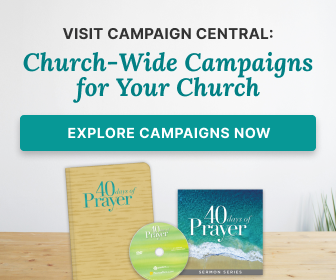Evangelism
6 Key Evangelistic Strategies to Help Your Church Grow

I believe church health matters much more than church growth. Healthy churches grow. They grow stronger through worship, warmer through fellowship, deeper through discipleship, and broader through ministry.
And they also grow larger through evangelism.
Healthy churches follow Jesus’ pattern by reaching out to new people with the Gospel.
Here are six evangelistic principles, modeled by Jesus, that will help your church reach new people.
1. Know who you’re trying to reach. No church can reach everyone. The moment you plan a worship service and pick a music style, you’re telling people who you’re trying to reach (and, conversely, who you’re not). If you try to reach everyone, you probably won’t reach anyone.
We know Jesus had a specific evangelistic target. He tells us that directly in Matthew 15:24: “I was sent only to help God’s lost sheep—the people of Israel” (NLT). Of course, that doesn’t mean that Jesus didn’t love everyone. He did—and still does! But he was evangelistically targeting the lost sheep of Israel.
The same is true of Peter and Paul. Paul writes in Galatians 2:7, “Instead, they saw that God had given me the responsibility of preaching the gospel to the Gentiles, just as he had given Peter the responsibility of preaching to the Jews” (NLT).
If Jesus, Peter, and Paul can target certain people evangelistically, so can you.
2. Understand how unchurched people think. This is what made Jesus so effective. Just go back and read some of the examples in the Gospels where Jesus engaged people (like in Matthew 9, Matthew 12, Mark 2, Luke 5, Luke 9, and Luke 11, in particular). The Bible frequently notes that Jesus knew what people were thinking.
It’s much easier to reach people if you can understand where they are coming from. Unfortunately, the longer you are a believer, the less you think like an unbeliever. If you’re a pastor, your thinking is likely even further away.
So how do you bridge this gap? It’s simple: You talk to unbelievers. When I first came to the Saddleback Valley nearly 40 years ago, I surveyed the community with four basic questions about how people felt about church. Why? I wanted to understand how unchurched people in the community thought.
3. Focus on the most receptive people. This is what the parable of the soil and the sower is all about. Receptivity to the Gospel varies. Sometimes people are especially open to the Gospel. Other times they are not. It’s God’s job to make people receptive. It’s our job to be faithful to share the Gospel when people are ready. If you must pressure people to come to Christ, they’re not ready.
Growing churches focus on reaching receptive people.
A few years back in a Toolbox article, I shared a list of 10 groups of people who are particularly receptive to the Gospel. I recommend you look at the list if you’re re-examining your evangelistic strategy.
4. Let your target determine your approach. When you want to find out what will reach a certain group of people, ask them. Let me give you one of my favorite examples of this from my friend John Wimber, who led the Vineyard Church movement. Early in his ministry, he took a survey of the neighborhood and found out the biggest need among young couples was help with potty training their kids. So his church hosted a potty-training seminar with a Christian psychologist. They reached dozens of young couples with that ministry.
You can’t reach people on your own terms. You can’t say, “We want you to come to Christ if you come to our building, at our time, to do what we want you to do.” You won’t reach people that way. You must be flexible to reach people. None of the innovations we’ve used to reach people for Jesus at Saddleback were pre-planned. We did them in response to the situation we were in at that moment.
5. Offer people choices. We live in a world of choices. Look at the options we have in television channels, soft drinks, and coffee. We’re inundated with options these days.
Offering people choices helps you reach new people for Christ, too. You’ll reach more people that way. You’ll be more effective evangelistically if you reach out to teachers, firefighters, and police officers in different ways. Growing churches practice what I call saturation evangelism, which means they use every available means to reach people.
6. Focus on people closest to your church. This is the basic New Testament strategy. You reach the people closest to you. Just look at what the disciples themselves did. Who did Andrew bring to Christ? He brought his brother, Peter. Matthew brought other tax collectors. The woman at the well brought the entire village, because she knew them.
Your church is best suited to reach certain kinds of people. God made all kinds of churches to reach all kinds of people.
I’ve never been ashamed of trying to grow Saddleback Church. When I preached the vision message of Saddleback a week before our official launch on Easter of 1980, I mentioned a numerical goal in the vision.
Why?
I’ve always believed numbers represent people. I don’t think God wants Saddleback to stop growing until we’ve reached every person within driving range of the church. That hasn’t happened yet.
My guess is that your church isn’t there yet either.
So let’s keep growing. Let’s keep reaching new people for Jesus.















